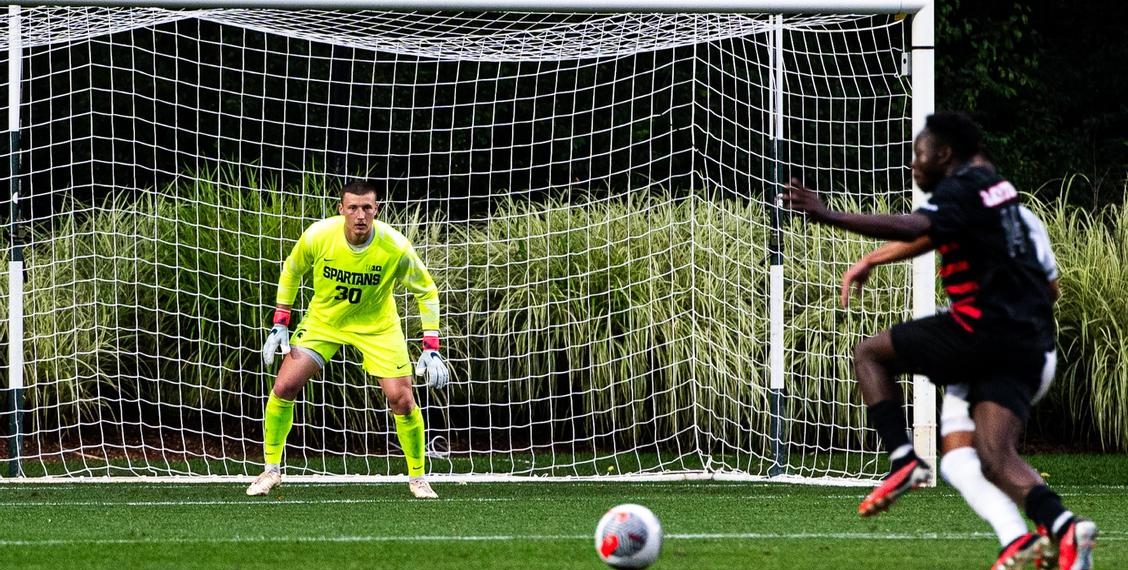As The College Soccer Season Progresses into the fall, every team hopes this will be the year for some late season magic. While the Ability to go on a postseason run often seems to come out of nowhere (like pulling a rabbit out of a hat), even david copperfield identified his critical components to success (passion, preparation and persistence). in like fashion, the following eight indicators are essential for teams that wish to do something memorable down the homestretch.
Balance – The appropriate balance will vary somewhat among teams based on personnel and style of play, but the bottom line is that they must find a balance that maximizes their ability to apply pressure on the offensive side of the ball while remaining organized and stable on the defensive side of the ball.
Offensive pressure and defensive stability are linked. The inability to place an opponent under pressure enables an opponent to push numbers forward, take risks, and place your defense under pressure. Conversely a weak defense hampers a team’s ability to push numbers forward and play on the front foot without leaving themselves vulnerable on the defensive side of the ball.
As a season progresses, legs get tired and prone to injury. A team that is under constant defensive pressure might not hold up as well as one that has balance. The appropriate balance enables a team to settle into a rhythm of play that maximizes their chance to prevail.
The Ability To Adjust To Different Styles of Play – The ability of a team to continue to play to their strengths while facing teams with different styles of play is important. Some opponents will play direct, some will be possession oriented, some more physical, some very effective out of set pieces, some will be dangerous out of counter attacks, some will pack the back on defense. As the season pushes into the winter and temperatures plummet in certain parts of the country, teams will need to be prepared to adjust to playing conditions they are not used to.
Solid Team Defense –Late season games often have the highest stakes associated with winning or losing. As such, the game tightens up and teams tend to take less risks. This results in many games where the difference between winning or losing is one goal. What’s it going to take to be on the winning side. Team is the key word when it come to solid defense.
Backs and netminders are the last line of defense but often the breakdown that opens the door for an opponent to score occurs outside of the defending third. Teams that limit the number of shots on goal and allow few goals play solid team defense everywhere on the pitch.
Big Play Ability – The focus here is often on the ability of a team to finish the goal scoring opportunities that come their way, but it is also applicable to the ability of defenders and particularly goalkeepers to come up with big saves and stops.
Productive teams have finishers with the ability to come up with the big goal in the clutch that provides the edge needed to prevail in close contests. The best finishers have great touch on the ball and quickness, but a deeper dive will establish that they also consistently make the runs they need to make to be in the right place at the right time and do a great job of placing rebounds into the back of the net.
The teams that hold up trophies are the ones that have a few players who seize the moment and are not afraid to make the big play.
Depth – The ability to keep fresh legs on the pitch without a drop off in the level of play is huge as the grind of the season progresses. Depth also enables a team to play through the inevitable injuries that occur during a season.
Seasoned coaches have been preparing for the late season by taking advantage of opportunities to get non-starters and young players time and experience on the pitch so they are ready to step in and contribute when it matters most.
Physical Stamina – The stamina to put in a full 90 minutes when needed without a decline in performance is huge. This becomes even more of a factor when we get into the potential for overtime during post season play. Missed opportunities on the offensive side of the ball, lapses in play on the defensive side of the ball, and injuries can occur due to lack of stamina. Teams that are in shape finish strong. Teams that are not have trouble closing out contests.
Momentum – Every season there are a few teams that struggle early on but jell as the season progresses. There are also a few teams that start strong and then struggle. All coaches want their team to improve and play their best soccer of the season down the home stretch when it counts the most.
Often times the intangible of momentum is captured by something that happens off the field. Teams that make decisions to meet together for meals or have a memorable shared experiences can play dividends to on field chemistry.
Heart – Last but by no means least. Heart pertains to team chemistry. The ability of a team to merge their individual talents into a unified team. It gives a team the edge they need to prevail in the games in which they may not be playing their best. It enables teams to dig deep and persevere under pressure.
Heart can be hard to describe but you know it when you see it. Leadership, determination, a focus on team rather than the individual, and confidence are among contributing factors. Heart produces the grit that some teams have, and others don’t.
Heart by itself may not always enable a team to prevail but it is often a difference maker particularly in close contests. Without heart a team will not handle adversity well and will not play through challenging times.
The Bottom Line – Late season heroics may be entertaining to the crowds, perplexing and sometimes unexpected, but it’s not magic. Teams that embrace the eight characteristics identified above will be set up for success.
Picture from Michigan State Athletics





